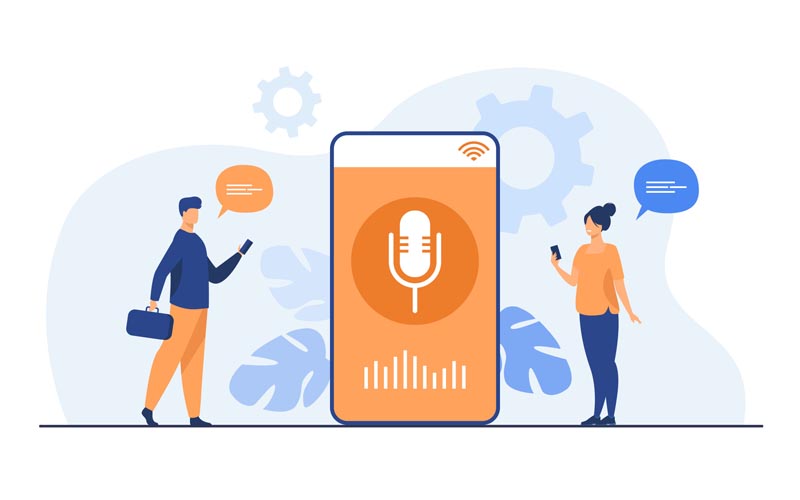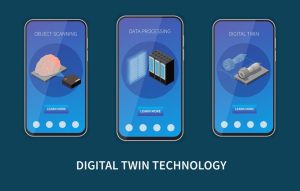Voice search is how we use smart devices every day. Voice search on phones was the first step, and then we got used to smartwatches, voice assistants, car speakers, and much more. Several cloud platforms, such as Siri from Apple, Google Assistant, Microsoft Cortana, and Amazon’s Alexa, are getting credit for giving us this ability, but Edge Computing is the real hero.
This technology is a key part of what makes voice search interfaces possible. There is a lot of analysis inside the devices to figure out how to handle the users’ voices, languages, and accents. Let’s go into detail about how voice search works.
Keyword detection
Voice search is becoming a big part of digital marketing, so keywords that most people use are becoming more important. So, when you ask a voice-enabled device to search, it doesn’t always record your voice and ask the cloud if someone is telling it what to do.
Recording and transmitting it back and forth will take a lot more time, adding to latency and slowing down the response time. Not only that, but all the privacy, energy, and resources would also be wasted.
Most voice-adaptive interfaces use the wake-word detection method, which uses a few-edge computational power to process at the edge or on the device itself. This is how the devices process the signals from the microphones without messing up the system. This method uses very little power and extends the time that smart devices, which run on batteries, can be used.
During the main part of the wake-word detection, digital signal processing (DSP) finds a match with the most-expected word. Also, it tells the whole system that it needs so much computing power to record sound, understand language and accent, track voice, and send it after it has been compressed.
Noise Separation from Main Commands
The voice-enabled smart device listens more carefully after it has found the keywords. Now, it’s up to the system to figure out what the voice commands mean. Well, this depends on how clean your voice and accent are, which can be harder to do on the street, at a restaurant, party, or in a room full of people talking.
Several edge computing methods can differentiate the main user’s voice from the rest of the noise. Beam-forming techniques, for example, use the device’s multiple microphones to focus on the direction from which the user is speaking. This could be like a virtual directional microphone.
When the user moves, the smart device’s voice tracking algorithms change the signals from the different microphones to maintain the focus on where the voice is coming from. Now, voice-enabled devices have more advanced technology that helps them process commands from several microphones by canceling the noise around them. This is also how headphones that block out noise work.
The echo- and noise-canceling technology is also built into smart speakers. With the assistance of microphone signals, it cancels out all the sounds of many other speakers and music so that the smart speaker can hear voice commands even when there is a lot of noise around. The smart speaker can do what you tell it to do whenever you tell it to.
Artificial Intelligence on a Smart Device
Edge computing has made it possible for smart devices, like those that can be controlled by voice, to use AI on the device. This method lets the device use its language memory processing to handle basic offline commands without an internet connection.
So, even when the device isn’t connected to the internet, you can set a reminder or alarm, turn on or off the lights and security alarm, or change the temperature. Voice can also authenticate users on smart devices with more cutting-edge technology.
This feature stops random individuals from giving your voice-processing device commands you don’t want. You can also teach the AI-powered voice-processing device to recognize your baby’s cries or the sound of something breaking so that it can sound an alarm to let you know.
You can add cameras that work with your voice to get good outcomes and clearer details. Artificial intelligence is improving, so there are many interesting ways to use it. Heterogeneous processors are used more in smart devices because people want them to be the best at high-tech edge processing.
As more and more resources need to be put on a single chip, the architectures are becoming more diverse. Putting all of this together helps make the best use of energy and computing resources, which saves money. Tasks can be done with all devices that have a voice interface.
Making Final Statement
We are currently used to using voice search on our phones and smart speakers. However, as edge computing and artificial intelligence improve, virtual voice interfaces can control many more devices.
Together, the power of the edge and cloud computing can make the world a better place where devices can also do many things locally or offline. Now that we have 5G, smart devices will also be more responsive. Technology will continue to improve, making our that on and us less active.



